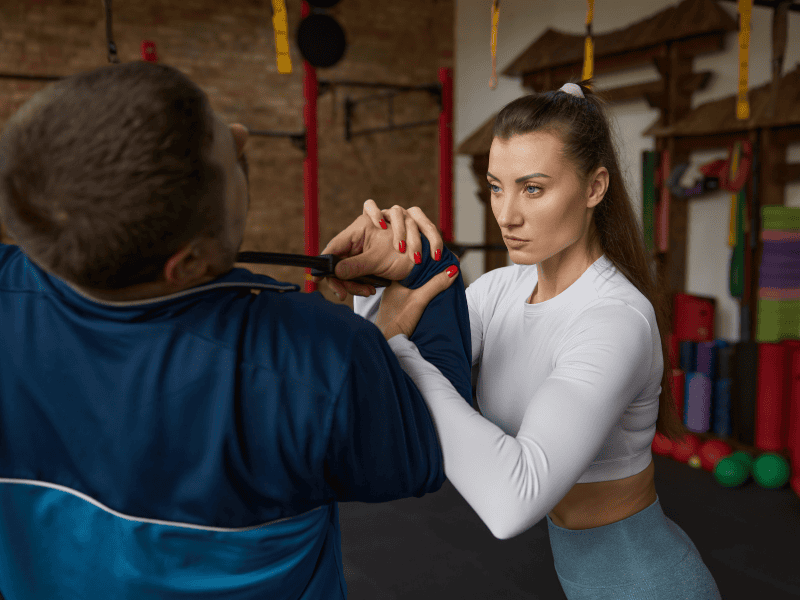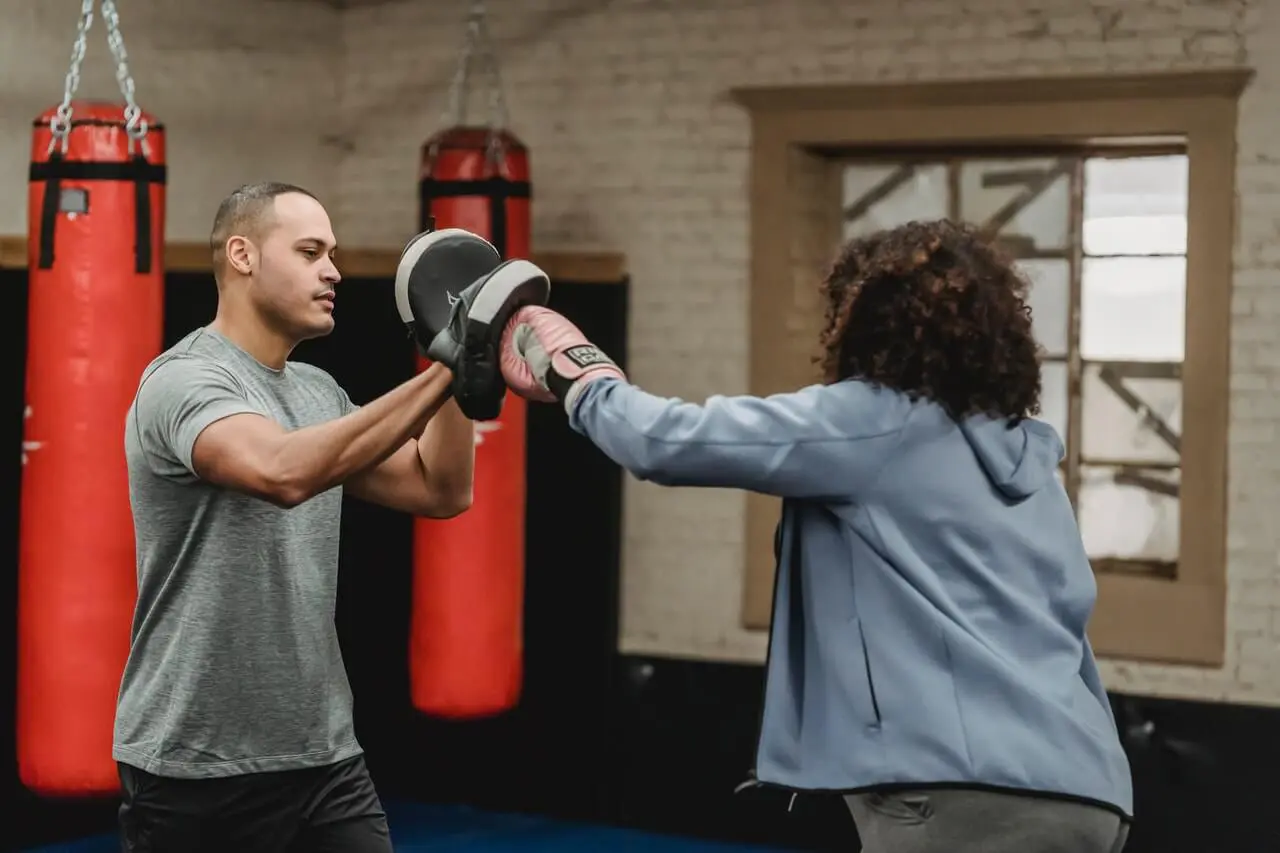The demand for “reality-based” self-defense (RBSD) training has exploded among adults in the last 15 years. Krav Maga was at the forefront of that craze, but dozens of RBSD and “Combatives” programs have sprung up to vie for market share and fill the need for this type of training. It’s also a natural preoccupation of martial artists who have aspirations to teach.
Anyone in martial arts who wants to teach will be concerned with gaining the proper credentials for doing so. With self-defense, there’s definitely legitimate and illegitimate ways to go about becoming an instructor. However, it’s not as easy as one certification or credential. So in this article we’ll explore how you can become a self-defense instructor.
Training for Self-Defense Instructors
There is no governmental or singular professional regulator of self-defense credentials in the USA, and the situation seems to be similar in other English-speaking countries. Therefore, gaining the proper training to become a self-defense instructor is up to your own personal integrity and pursuit of knowledge about how violence works.
Physical Self-Defense Training
Traditional martial arts used to be dominant in the Defensive Tactics and RBSD space. Instructors took their classical training and boiled down the techniques into simpler methods that they then taught to Police and Military as well as civilians.
However, it’s been found that many of the methods, especially the grappling-based ones, are not very effective in real life self-defense situations, especially for smaller or weaker people. One of the reasons this happened was because these training programs built out of traditional martial arts were not sufficiently pressure tested.
Pressure testing is a method of training where a trainee’s skills are tested in a realistic environment. For self-defense, this would include unscripted, uncooperative physical resistance and force (sparring), and could also include yelling and conversation that mimics high stress situations leading to violence.
While it’s possible to effectively prepare yourself to become a self-defense instructor with traditional martial arts training, you’re actually more likely to get training with good pressure testing by training in a combat sport. These include Brazilian jiu jitsu, Muay Thai, boxing, (contact) kickboxing, and some others.
While it’s true that these martial arts are oriented toward sports, it’s not true that their training is less valuable than traditional martial arts when it comes to self-defense. Instead, they give you important skills for efficiently and effectively managing punches and grapples – and they do so in the context of pressure testing against an opponent making a genuine effort to hit or subdue you.
And while it’s true that these combat sports have weight classes – unlike “the street” – it’s not true that combat sports are trained only against someone of comparable size in the gym. Rather, it’s commonplace to spar with opponents who are regularly larger than oneself. Contrast this with traditional martial arts, where sparring is often rare, and it becomes clear why this training is so valuable as a base for self-defense.
Combat sports are one of the best ways to build self-defense skills. That said, combat sports and self-defense as domains of knowledge are technically different. You do need to study the most likely patterns of attack in real life self-defense situations, and you also need to learn how to adapt your skills to potentially deal with weapons. You can do this with your own study, but there are also excellent self-defense oriented programs that teach you how to apply your combat sports and martial arts skills to self-defense specific situations:
- ShivWorks
- Fit to Fight Krav Maga
- Immediate Action Combatives
- ISR Matrix
- Sharp Defense
Krav Maga schools are also an option, but the quality of Krav Maga schools vary significantly from one place to another. Overall, it’s probably best to have a solid martial arts/combat sports base before attempting a self-defense specific program.
Psychological, Physiological, & Situational Self-Defense Training
Self-defense is more than a collection of simple but effective martial arts moves. It’s about being aware of your surroundings (situational awareness), aware of the time of day that you’re out, who’s with you (or not with you), and how you carry yourself and talk to others.
It’s important for students to understand that their bodies will feel and operate differently under the stress of violence than they do when they are calm. Everyone has experienced an adrenaline dump, but few people know what it feels like going into a physical altercation. To understand the psychology and physiology of violence, I recommend starting with these books:
- The Gift of Fear by Gavin De Becker
- Meditations on Violence by Rory Miller
- On Combat, The Psychology and Physiology of Deadly Conflict in War and in Peace by Lt. Grossman
These will also help you understand the nitty-gritty around situation awareness – things to look for, what to ignore, and how to respond properly before things turn violent.
Verbal De-escalation & Tactical Communication Training
Verbal de-escalation is the skill of lowering the temperature of a conversation with words, helping to calm someone down, and as a result avoiding a potentially violent situation. It is used by police, security, and regular people every day to successfully manage difficult, potentially explosive confrontations.
This training is something that self-defense programs pay a lot of lip service to but rarely follow-through on. Some programs give a few basic tips on how to navigate a potential pre-fight conversation, and others stress the importance of this skill set but offer no real guidance. Few programs offer robust education on how to de-escalate an irate person with words.
Also known as “tactical communication,” verbal de-escalation is a skill set that’s useful everywhere in life, and you stand to enrich yourself greatly by studying and practicing it. This cultivated skill, in turn, will allow you to deliver excellent trainings on tactical communication to your students, better than most other self-defense instructors.
To learn the art of verbal de-escalation, I recommend starting with these mainline works:
- Verbal Judo by George Thompson
- Conflict Communication by Rory Miller
- The Gentle Art of Verbal Self-Defense by Suzette Haden Elgin
Practice these principles and techniques every time you get in an argument at home, or with friends, or find yourself in difficult or potentially explosive conversations at work or as you go throughout the day. This real life experience of using tactical communication successfully will only deepen the value of the training you offer students.

Self-Defense Instructor Certification
There are dozens of Reality-Based Self-Defense and Combatives certifications on the market, but it’s hard to find something that’s truly legitimate and worth the cost. Krav Maga certifications are perhaps the most popular, but even there, dozens of small organizations with dubious credentials have sprung up to certify instructors with quick weekend programs that don’t impart much of anything in the way of real self-defense knowledge or skill.
Self-defense instructor certifications can help bolster your perceived authority when it comes to running a self-defense training business. It’s an easy accolade that potential students can look at and feel secure that you know what you’re talking about.
However, the reality is that your authority comes from your skill in defense-oriented martial arts and your knowledge of situation awareness and tactical communication. Most certifications don’t require enough knowledge or training time to actually develop instructor-quality skill in each of those three competencies. It’s up to you.
Perhaps more effective than certifications is to have a professional background in police work, private security, bouncing, or the military. If you don’t have such a background, often being an expert in a martial art, or several martial arts, is enough to establish your expertise to potential clients.
If you do go the certification route, you’ll most likely pursue certification in Krav Maga. For here, it’s best to stick to the major organizations and stay away from the smaller ones:
- Krav Maga Worldwide
- Krav Maga Global
- Fit to Fight Krav Maga
- Krav Maga Alliance
Conclusion
Becoming a self-defense instructor is a long and complex road. While certifications exist, the reality is that you are responsible for gaining self-defense knowledge and building strong self-defense-related skills. In fact, you need to do more than be good at martial arts: you need knowledge of combat psychology and physiology, situation awareness, and tactical communication.
 Gym Owner Statistics: The State of Gyms, Member Trends, and Usage Data
Gym Owner Statistics: The State of Gyms, Member Trends, and Usage Data




 EN (English)
EN (English)
 JA (日本語)
JA (日本語)